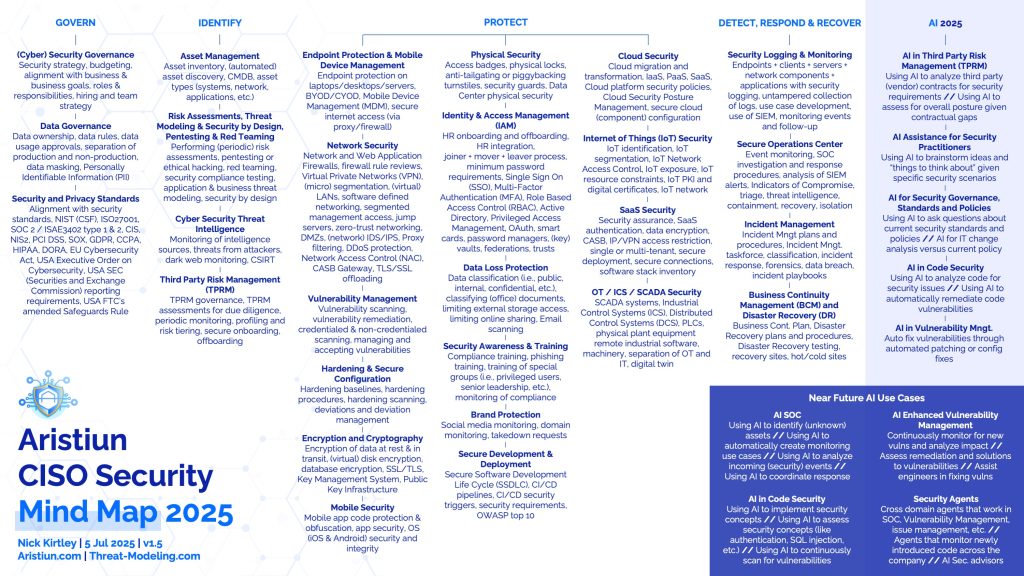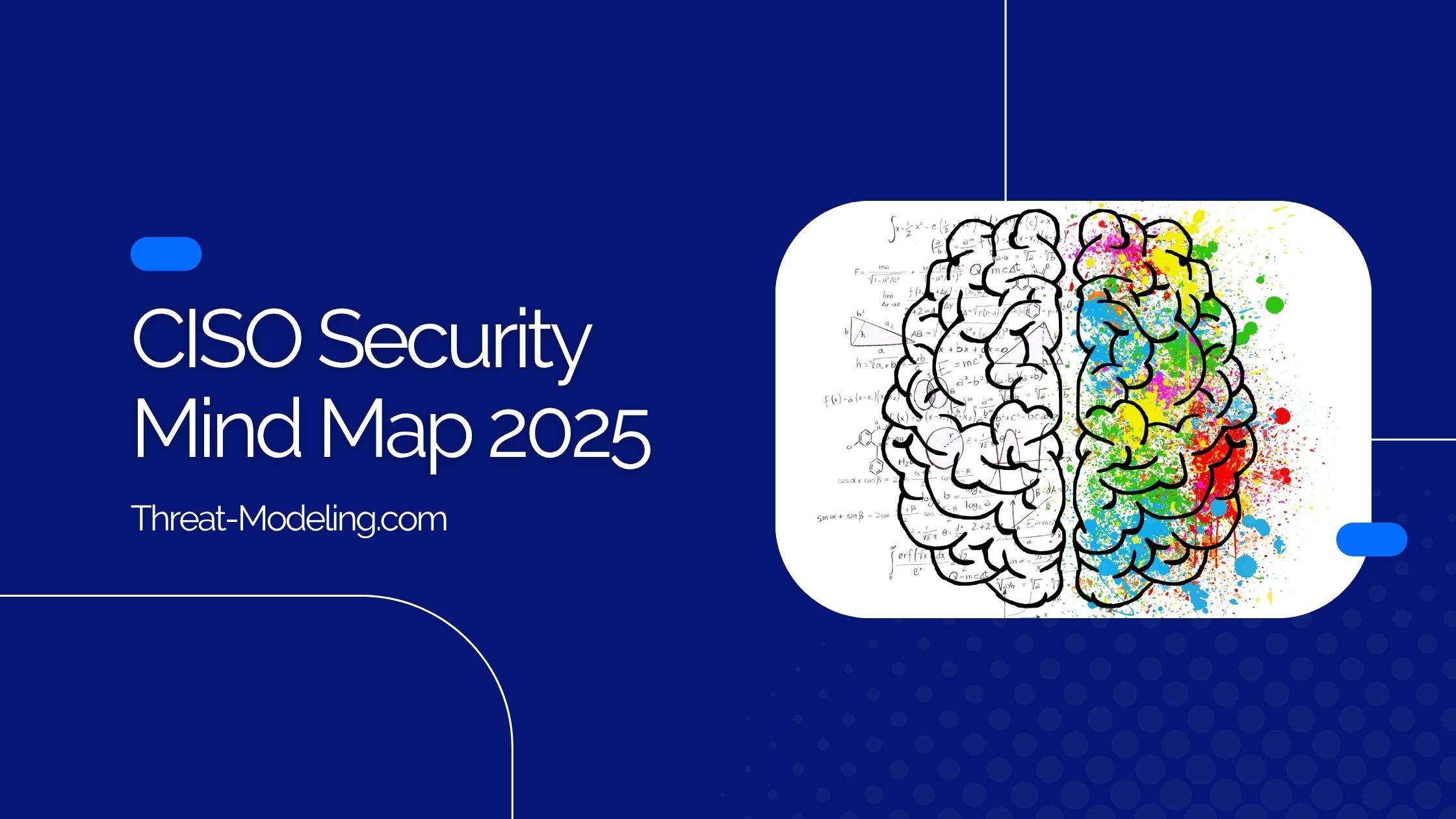We’ve created the CISO Security Mind Map 2025. It’s an update from the previous year. You can find the previous CISO Security Mind Map 2024 version here.
This year is the year of AI in security. Therefore, we included AI use cases that are already occurring in the trenches (so it’s not hype, it’s actually here). Further, we included near future use cases that we expect to see very soon or perhaps we’ve already seen glimpses of it (but not quite operational).
As usual, the security mindmap is split into: Govern, Identify, Protect, Detect, Respond & Recover, to match the NIST CSF 2.0 functions.

CISO Security Mind Map 2025 – Click to Enlarge
An Overview of the Changes to the Security Mindmap
- Strong focus on AI that’s already impacting how security programs operate.
- AI in Third Party Risk Management (TPRM)
- Contracting and contractual language is a big part of Third Party Risk Management, and AI/LLMs can play a role in improving effectiveness of agreeing on contractual requirements, and making the process more efficient.
- AI Assistance for Security Practitioners
- Security Practitioners are overwhelmed by the amount of work within large (enterprise) companies. AI can help with this, by analyzing problem areas, and providing advice, or assisting in the advice process.
- AI for Security Governance, Standards and Policies
- Security Governance, Standards and Policies are text heavy, and can be easily analyzed by AI/LLMs. Within large enterprise companies there are often questions related to policies, security requirements, etc., AI can certainly help with these. For example, a common question is “What is our password policy? We can only apply a password length 0f X characters, is that within policy?” for XYZ scenario, AI can help to scan the requirements and provide an initial answer which can be augmented by a security professional.
- AI in Code Security
- AI is already being used to create fully functional code, either in an assisted setting, or completely developing full use-cases (called vibe coding). Adding security within code is also occurring, but not common practice yet. Further, it is possible to use AI/LLMs to analyze code for security aspects.
- AI in Vulnerability Management
- Some companies are already leveraging AI within the Vulnerability Management process, to automatically fix vulnerabilities.
- AI in Third Party Risk Management (TPRM)
- Strong focus on AI that will impact security programs in the near future.
- AI SOC
- AI will be involved in more and more daily work within a SOC environment. This will make SOC employees more capable and more efficient. The responsiveness of an AI powered SOC will also improve, by applying continuous monitoring and response capabilities.
- AI Enhanced Vulnerability Management
- As previously stated, AI in Vulnerability Management has already started. This will continue to a point whereby more and more vulnerability management remediation and response will be automated. Humans will pick up remaining difficult to solve vulnerabilities. Further, Vulnerability Management has a large process and organizational element to it, which will be more difficult to solve using AI.
- AI in Code Security
- Again, AI in Code Security already exists. However, the near future will see more and more code generated by AI, including a focus on secure code generated by AI. This is already happening and will continue to accelerate in future.
- Security Agents
- AI agents are currently a hot topic within IT. This will extend to AI Security agents that will work across security topics such as SOC, Vulnerability Management, Issue Management, etc. Security Agents will work autonomously and continuously to identify and fix security issues.
- AI SOC


